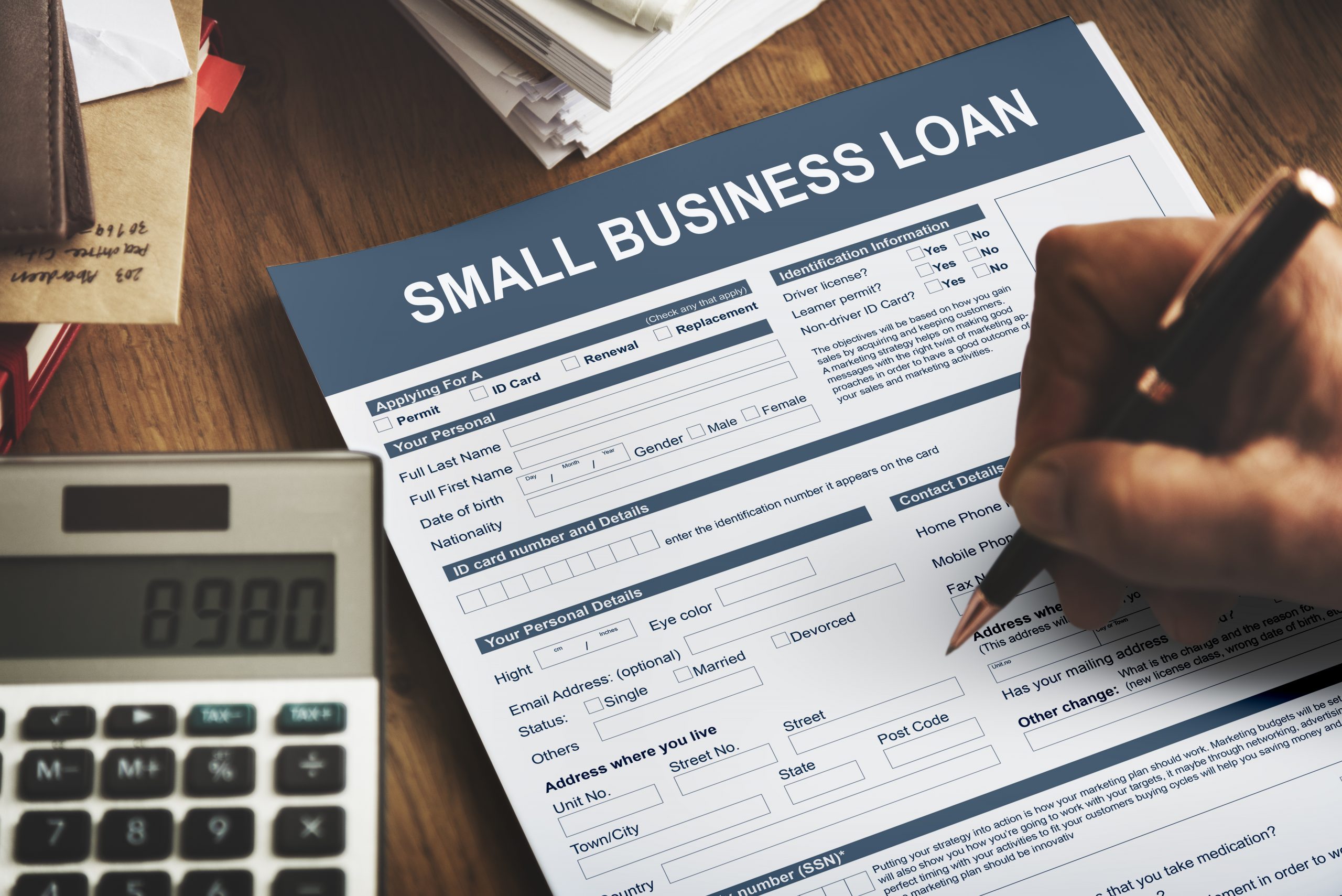Let’s face it; running a business successfully takes money. But sometimes your cash flow isn’t working in your favor. Cash flow problems may not be a sign of failure; it may just be that money you’ve earned isn’t available yet. For businesses that rely on having cash available so the business can run without interruption, opening up a business line of credit is a reliable option.
A business line of credit is a cushion for your business. It’s there for you if you need it, and if you don’t use it, there is no interest charged.
How Does a Line of Credit Work?
A line of credit is similar to a credit card attached directly to your bank account. Instead of having a plastic card that you use to make retail purchases, a business line of credit is used to transfer payments directly from your bank to a vendor or supplier.
A business line of credit can be used over and over again, making it easy for your small business to have a continuous source of cash. Unlike a short or long-term loan that has a fixed repayment schedule, you can pay back the balance as quickly or as slowly as your business can afford. Sometimes a line of credit may require a regular minimum payment, much like a credit card.
Sometimes, a line of credit will allow you to use other financial instruments to make payments in addition to direct bank transfers. You can ask your lender if you can write checks against your line of credit, or if it has a credit or debit card that you can use to make smaller purchases.
How Can I Qualify for a Line of Credit?
The most important thing your business needs in order to get a line of credit is a strong track record. Small business lines of credit aren’t typically given to new businesses. You will need several years of a proven growth with a solid financial history in order to qualify for a line of credit.
There are some online lenders who are willing to extend a line of credit to small businesses without as much business experience or history. The obvious benefit is that small businesses who need more credit than a credit card can provide can get the money they need to help their business. On the other hand, interest rates are typically higher than a line of credit from a bank, and the credit limit may not be as high as a bank will offer.
In order to determine if your business can qualify for a line of credit, the lender may request a credit report to determine if your business has a good credit score. Before applying for a line of credit, it’s a good idea to request a copy of your business credit report, and try to resolve any issues on the report that may be negatively affecting your credit score.
If you’ve been in business for a few years, talk to your bank representative. Ask them what requirements they have in order to establish a business line of credit, and whether or not you qualify for one.
How Long Does It Take to Get a Line of Credit?
If you’re applying for a line of credit for your business, you might be surprised to learn that you can get one from online lenders in as little as a day. In today’s business world, being able to move quickly can make all the difference to small businesses. Having a source of funding that can help you win a large contract will help propel your business forward.
Banks typically take longer to approve small businesses for a line of credit. If you are considering applying for a line of credit, take some time to collect your financial records, including your tax returns, to show the bank.
When talking to potential agents that can help you get a line of credit, ask them how long it will take to open a line of credit. It might even pay to open a line of credit before you actually need one. Somewhat ironically, it might be easier to open a line of credit for your business before you actually need it. If your bank statements are healthy and your credit score is good, it will not only be easier to get approved, you will probably be able to get a more favorable interest rate.
When applying, make sure there are no fees for *not* using the line of credit, called inactivity fees. Ask lots of questions when hunting for the best deal on a line of credit, and compare the various offers to find the one that’s best for you. Like the old saying goes, it doesn’t hurt to ask.
Are There Different Types of Lines of Credit?
Lines of credit can be either unsecured or secured. A small business line of credit is usually an unsecured loan, similar to a credit card. That means you won’t be required to use your business’ property, vehicles, or your inventory as assets to secure the loan. Having to use business assets as collateral makes some small business owners nervous, so an unsecured line of credit is a much more attractive way to borrow money. On the other hand, an unsecured loan is typically a higher risk for the lender, since you as the borrower do not provide any collateral. This means that the interest rate is higher.
A secured line of credit means that you have provided some sort of collateral as a guarantee to the lender. In addition to the assets mentioned above, you can also use your business securities, or investment account to secure a line of credit. A non-commercial example of a secured line of credit is a home equity line of credit (HELOC, pronounced HEE-lock), where homeowners can use equity in their house as collateral for a line of credit.
Before making any decisions about applying for a line of credit, consult with your accountant and/or business advisor. They can help you determine if a line of credit is good for your business financially.
Why Don’t I Just Take out a Short-Term Loan?
The main difference between a business line of credit and short-term loan is the interest the lending institution charges. On a short-term loan, you pay interest on the entire amount borrowed, regardless of whether or not you use it or even need it. For a business line of credit, like a credit card, you only pay interest on the amount of money you use from it. This makes it a less expensive, and therefore more attractive option for small businesses that need a short-term cash influx.
Once you finish paying off a short-term loan, you no longer have that money available to you. You would need to go through the entire process of securing another loan if you needed money for your business. With a small business line of credit, you can pay down the outstanding balance, then turn around and borrow it again. This is especially useful if you have an unexpected payment you need to make.
Short-term loans may have conditions built into the terms of the loan for using the money. Some loans may only be used for capital expenditures such as buying major equipment, vehicles, or property. With a line of credit, the money loaned to you by the lender doesn’t come with those types of limitations, so you are free to use the funds any way you see fit for your company.
One advantage to a short-term loan is that they are usually available for larger amounts than a business line of credit. If your cash requirement isn’t that large, a business line of credit is a better option.
Sample Use Cases for a Line of Credit
There are many different scenarios where a line of credit for your business could be beneficial. Below are some examples of how your company can utilize a line of credit from a bank or online lender to help you grow your business.
Grabbing A New Opportunity
Sometimes luck is on your side, and a business opportunity comes along that you would otherwise have to pass up due to lack of funding. With a line of credit, you can be ready for an unexpected windfall, capitalizing on opportunities as they happen. In one example, using a line of credit to purchase the raw materials you would need to fulfill a larger order, you can grow your business without having to rush around trying to get a short-term loan.
Exploring New Business Options
Let’s say your business wants to try a new product or service. You could spend the cash from your profit, but if the venture isn’t successful or you decide not to move forward with it, it will reflect as a loss in your financial statement. This could scare away investors or business shareholders. Getting a short-term loan means you’re responsible for paying back the entire amount, with interest, on a specific schedule regardless of other business priorities.
Businesses that try to stay ahead of the competition are always researching and exploring new markets, products, and services. Having a business line of credit makes it easy for you to test new waters without having a negative impact on your entire business.
Seasonal Business Needs
Some businesses face challenges based on seasonality. In simple terms, there are times during the year that are much busier than others for some small businesses. Some examples are back to school, the winter holidays, and summer vacation. In preparation for busier times of the year, some businesses need to stock up on materials, supplies, and inventory.
Using a line of credit for seasonal demands isn’t limited to buying business material. If you need to hire part time workers to help with the busy season and make sure you aren’t short-handed, you can use your line of credit to pay their salaries.
Having a business line of credit to help with the up-front cash layout in order to have a successful season is one way to ensure that your business runs smoothly. Once the season rush is over, you can use your profits to pay back money used from your line of credit. You can also use a line of credit to pay your regular workers during the off-season, when it might otherwise be difficult to make payroll. Once business starts to pick up again, you can pay down your line of credit, ensuring that you can run your business smoothly and that your trained employees won’t leave you for other opportunities.
Consolidate Debts and Lower Interest Rates
If you qualify for a business line of credit for the first time, it may have a lower interest rate than the credit cards you’ve been using up until now. You can consolidate the debt from your credit cards by paying them off using funds from your line of credit. Not only will it make it easier to track your finances, but the lower interest rate means that you’ll be paying fewer fees, freeing up more money for your business to use.
Some Words of Warning
Establishing a line of credit can help your business, but there are a few things you need to consider before getting one. A line of credit, like a credit card, will probably have a variable interest rate, which means the lending institution can raise the interest rate on your line of credit. A short-term loan usually has a fixed interest rate.
Credit cards are more regulated by law than lines of credit. If you are late with your minimum payment, or if you go over the limit of your line of credit, the lender can impose more costly fines than a credit card.
Like a credit card, a line of credit is connected to your credit score. If you have trouble paying back the line of credit, it could have a negative impact on your credit report.





